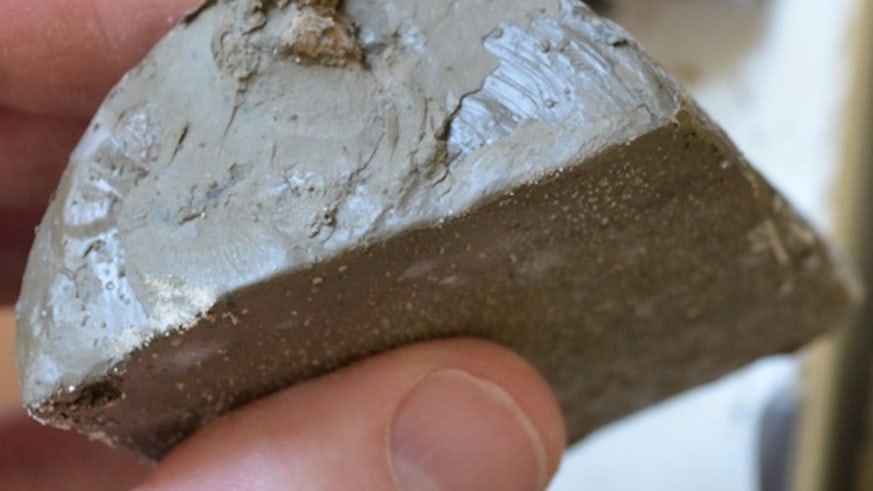Biscuits help resolve climate change controversy
28 January 2015

Analysis of seafloor sediments laid down in the geological past provides scientists with direct evidence of dramatic natural changes in oceanic, atmospheric, climatic and ecological conditions. Studies of layering in sediment cores, have led to controversy over the rate at which climatic disruption has occurred. That scientific controversy, important for projecting the scale of consequences of human-driven CO2 emissions, has now been resolved, by the detailed study of 'biscuits' in samples from marine mud and clay deposited on the sea floor.
In 2013, J. D. Wright and M. F. Schaller suggested that the layering observed in some sediment cores from New Jersey might record annual changes, which in turn would imply a near-instantaneous release to the atmosphere of thousands of billions of tonnes of carbon, as either CO2 or methane. Such an interpretation would have major implications for our understanding of climate processes and their effects, including the tolerance of marine organisms to very rapid ocean acidification. Other scientists disagreed about the time-scale of the carbon release, but conclusive evidence one way or another has, until now, been lacking. The authors made their cores available for re-examination.
Professor Paul Pearson suspected that the layering was an artefact of the sampling process. Sediment cores are extracted by cylindrical drills, and a combination of spinning and slippage can result in 'biscuiting' or 'discing', shown by internal cracks or breaks in the core samples. This process has been observed elsewhere, for example in sediment cores obtained from the Deep-Sea Drilling Project. In the Paleocene–Eocene boundary cores from New Jersey, around 13 such layers (each 2–3 cm thick) occurred over the period of the carbon chemistry changes; re-examination of the cores by Pearson and his colleague Dr Ellen Thomas (Yale University) showed evidence of concentric grooves characteristic of biscuiting.
But could such biscuiting arise from pre-existing weaknesses in the core, with the underlying cause being an annual periodicity in sedimentation? There was no evidence for such a process in the New Jersey cores, and in addition Pearson and Thomas re-examined the abundance of microscopic marine fossils (foraminifera) within the cores. If the layers had been formed annually, the accumulation rate of these micro-fossils would have to have been many times higher than the fastest rate observed in similar environments today, i.e. on the continental shelf, with rapid sediment accumulation. Since that is an unrealistic scenario, the inescapable conclusion is that the changes took place over thousands of years, consistent with Earth system models, rather than a decade or so.
'Whilst the initial mis-interpretation of the layering was an easy mistake to make, the resolution of this issue has profound implications' said Professor Pearson, 'The link between carbon dioxide emissions and ocean acidification crucially depends on the rate at which atmospheric changes occur; at slower rates, there is much more chemical buffering because carbon compounds move from the atmosphere into surface ocean waters and then into the deep sea, where they dissolve limestone. Furthermore, slower rates may enable some evolutionary adaptation by marine organisms. We can now be more confident in interpreting the past; however, these re-analyses increase our concern over what might happen in the future'.
P. N. Pearson & E. Thomas 2015. Drilling disturbance and constraints on the onset of the Paleocene‐Eocene boundary carbon excursion in New Jersey. Climate of the Past, 11, 95 ‐ 104. http://www.clim-past.net/11/95/2015/cp-11-95-2015.html
J. D. Wright & M. F. Schaller. 2013. Evidence for a rapid release of carbon at the Paleocene-Eocene Thermal Maximum. Proceedings of the National Academy of Science USA, 110, 15908‐15918.